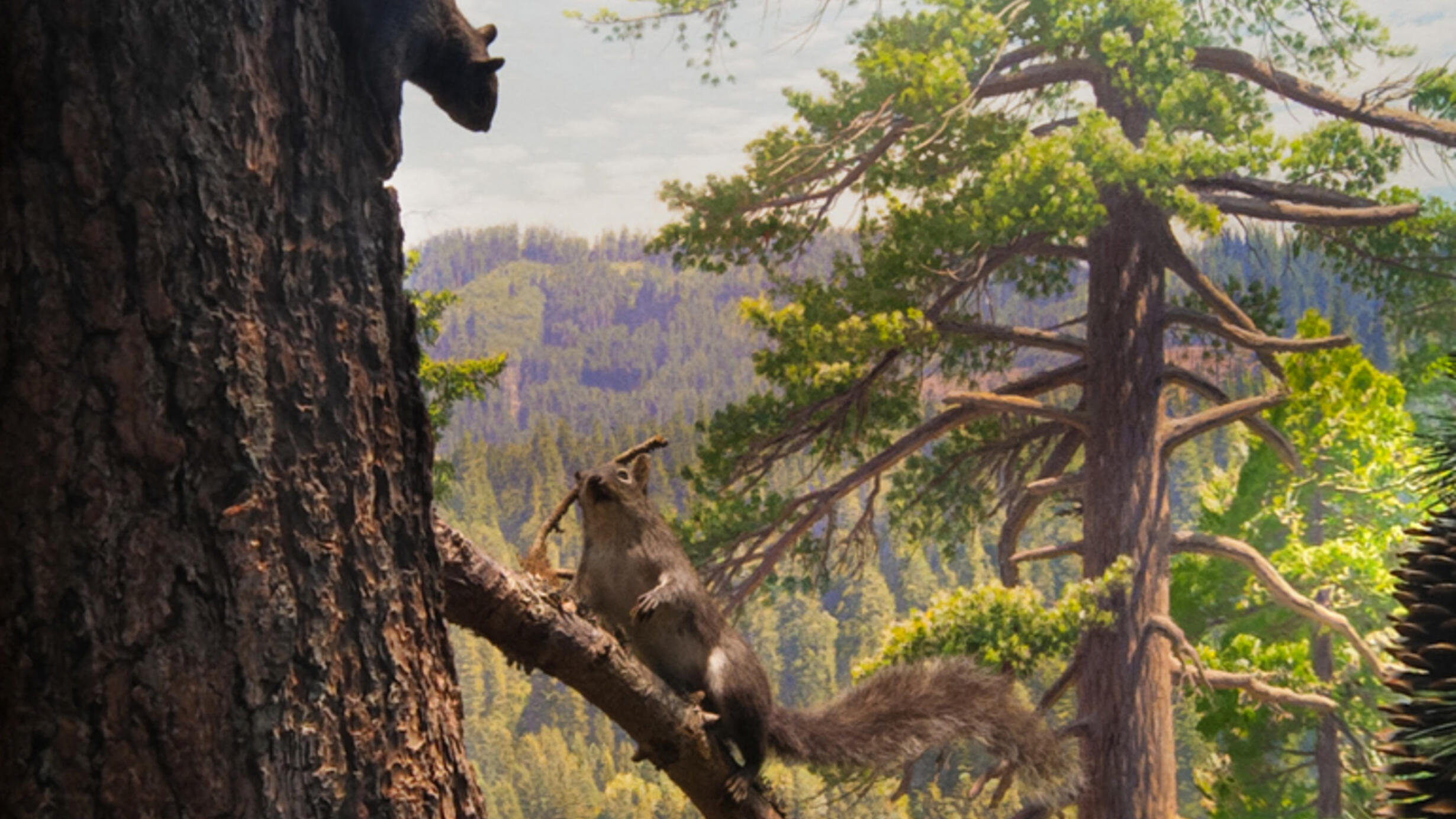Western Gray Squirrel
Part of Hall of North American Mammals.

July, Rogue River, Oregon
This perspective, high in towering sugar pines, affords a rare close-up of two western gray squirrels. Unlike the extroverted eastern gray squirrel, the shy western gray prefers the seclusion of thick tree canopy.
Tree squirrels are not very sociable and their encounters can turn aggressive. Squirrels challenge each other by chattering their teeth, stamping their feet and flicking their tails. Chases to assert dominance break out often.
Squirrels and Pines
Cascade Range, Oregon
Squirrels and trees need each other. Squirrels rely on tree seeds for nutrition, and many trees, like these sugar pines, depend upon squirrels to disperse some of their seeds.
Like all conifers, pines produce their seeds inside cones. Sugar-pine cones are huge and heavy—but western gray squirrels are big enough to haul them away. The squirrels then pluck the scales and chew the seeds inside, sometimes “in the round” like we eat corn on the cob.
Squirrels devour most seeds right away, but also bury extras to eat in winter. Forgotten seeds are thus “planted” to grow anew.